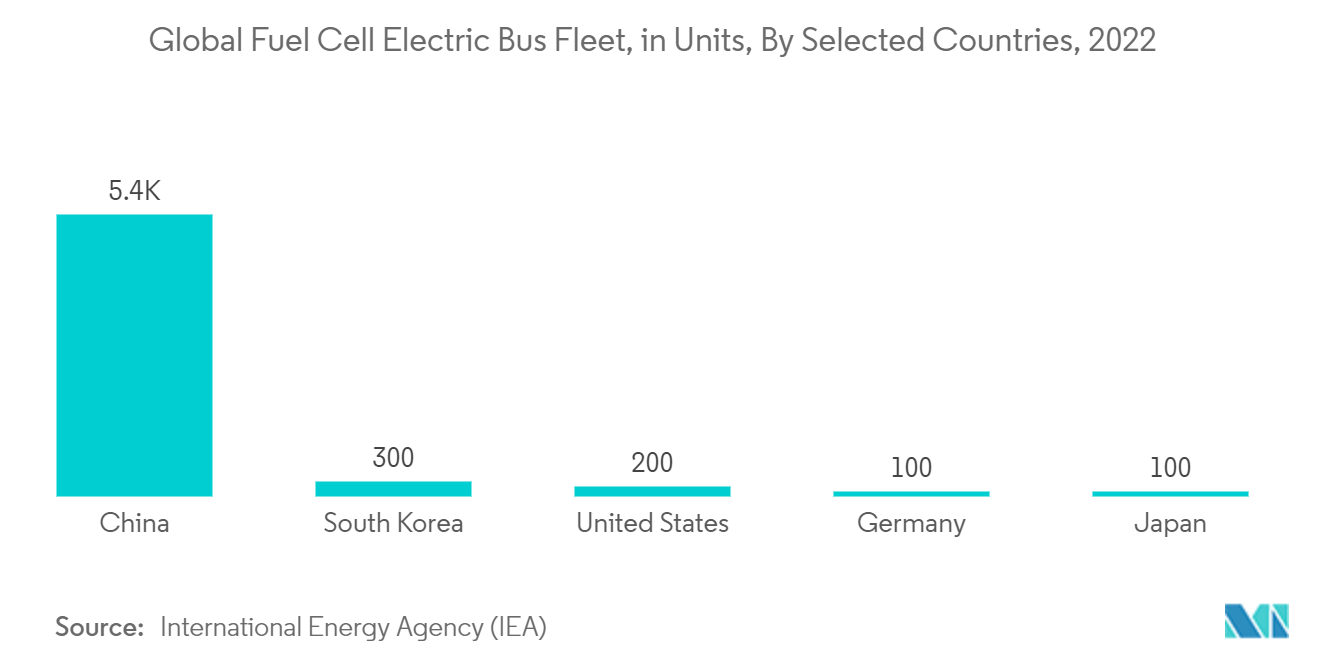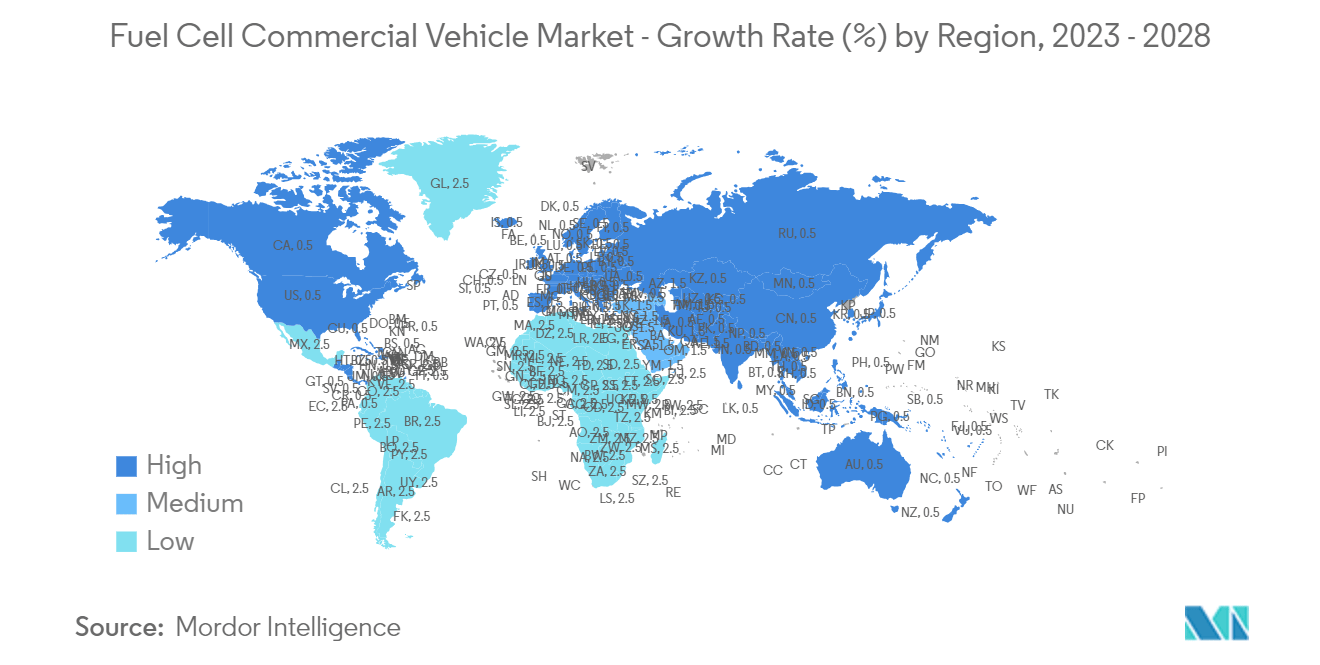Market Trends of Fuel Cell Commercial Vehicle Industry
The Buses Segment of the Market to Witness Surging Growth during the Forecast Period
The integration of fuel cell technology in buses has gained prominence in recent years, with countries such as China, South Korea, and the United States deploying a larger fleet of buses powered by hydrogen fuel cells. Government and private players operating in the industry are extensively focusing on collaboration to develop and ultimately deploy buses as an eco-friendly medium of transportation.
• According to the International Energy Agency, China dominated fuel cell bus sales with a fleet size touching 5,400 units as of 2022, while the fuel cell bus fleet touched 200 and 300 units in the United States and South Korea, respectively.
Furthermore, with the growing concerns over the environment, governments and environmental agencies have been enacting stringent emission norms and laws. They are expected to increase the manufacturing cost of diesel engines over the coming years. As a result, the new bus diesel engine segment is expected to register a sluggish growth rate in the short term, thereby increasing the demand for fuel-cell buses. Most diesel engines can convert about 40-46% of the fuel energy, while the remaining energy is lost into the environment as heat through exhaust emissions and cooling systems. The burden on commercial vehicle manufacturers increased with the enactment of the Euro VI emission for heavy-duty engines.
• In North America, the US GHG emissions and fuel efficiency standards pertaining to heavy and medium-duty vehicles have been developed jointly by the Environmental Protection Agency (EPA) and the National Highway Traffic Safety Administration (NHTSA).
• The NHTSA developed fuel consumption standards under the authority of the 2007 Energy Independence and Security Act (EISA), while the EPA developed a GHG emissions program under the Clean Air Act. In the United States, vehicles such as buses are regulated to achieve up to 27% CO2 emission reductions over the 2017 baselines by 2027.
Various state administrations are placing orders and formulating ambitious plans to deploy a higher number of fuel-cell public vehicles over the coming years. It is expected to positively impact the demand for the fuel cell bus segment of the market during the forecast period.

Asia-Pacific to Become the Fastest-growing Regional Market during the Forecast Period
Asia-Pacific is expected to lead the market owing to improvements in public transportation infrastructure in major countries like China, India, Indonesia, and Thailand. The rising urbanization rate and increasing investments in the construction industry aid the demand for alternative trucks and buses in the region. The Asia-Pacific region is also home to major manufacturers of fuel-cell vehicle technology, such as Zhejiang Geely Holding Group, Tata Motors, and Toyota Motor Corporation. These companies are actively engaging in the manufacture of fuel cell buses and trucks that can complement the government's effort to electrify commercial vehicle fleets.
Additionally, several new developments in the way of investments into fuel-cell-powered vehicles are further expected to increase the demand for fuel-cell commercial vehicles in the region. Several major cities and countries have released their goals to reduce commercial vehicle emissions, with plans for hydrogen technology and investments in this industry.
- The Japanese government is banking on hydrogen vehicles to achieve carbon neutrality by 2050. It has set an ambitious target of having 200,000 FCVs on the road by 2025, compared to about 3,600 in 2019, along with 320 hydrogen filling stations under its third Strategic Roadmap for Hydrogen and Fuel Cells.
- Japan-based Toyota and Honda Motor Co. Ltd are the pioneers in commercial passenger hydrogen models. However, South Korean rival Hyundai Motor Co. recently also entered the fray, encouraged by its government's plans to produce 6.2 million FCVs and build at least 1,200 refilling stations by 2040.
The growing investments to develop and enhance hydrogen fueling stations in Asia-Pacific countries are also expected to drive the market's growth.
- According to the United States Department of Energy, China and Japan are the top two countries worldwide constructing the highest number of hydrogen fueling stations. As of 2022, the number of hydrogen fueling stations in China touched 250 units, while in Japan, the number of hydrogen fueling stations touched 161 units during the same period.
With the increasing support of governments and private players to support the adoption of fuel cell technology, Asia-Pacific countries are expected to record surging growth during the forecast period.


